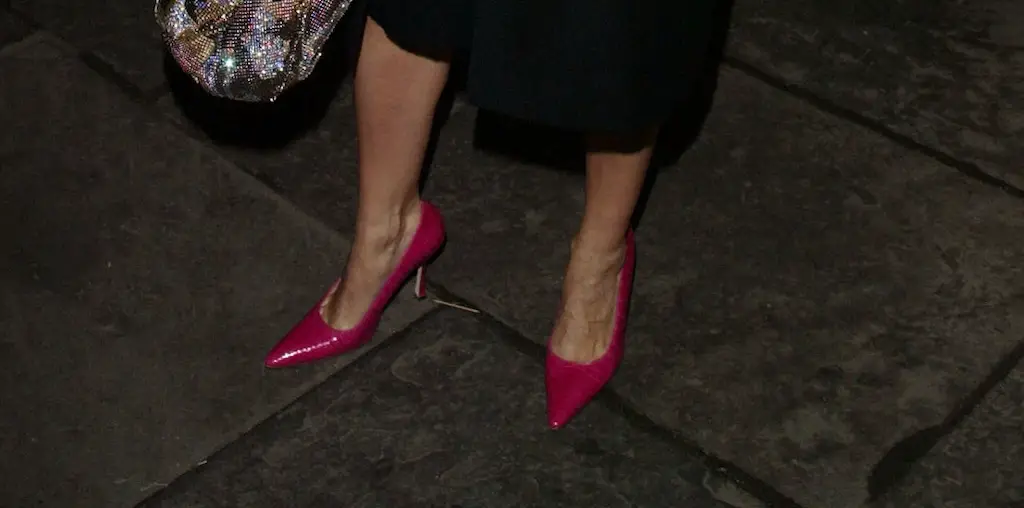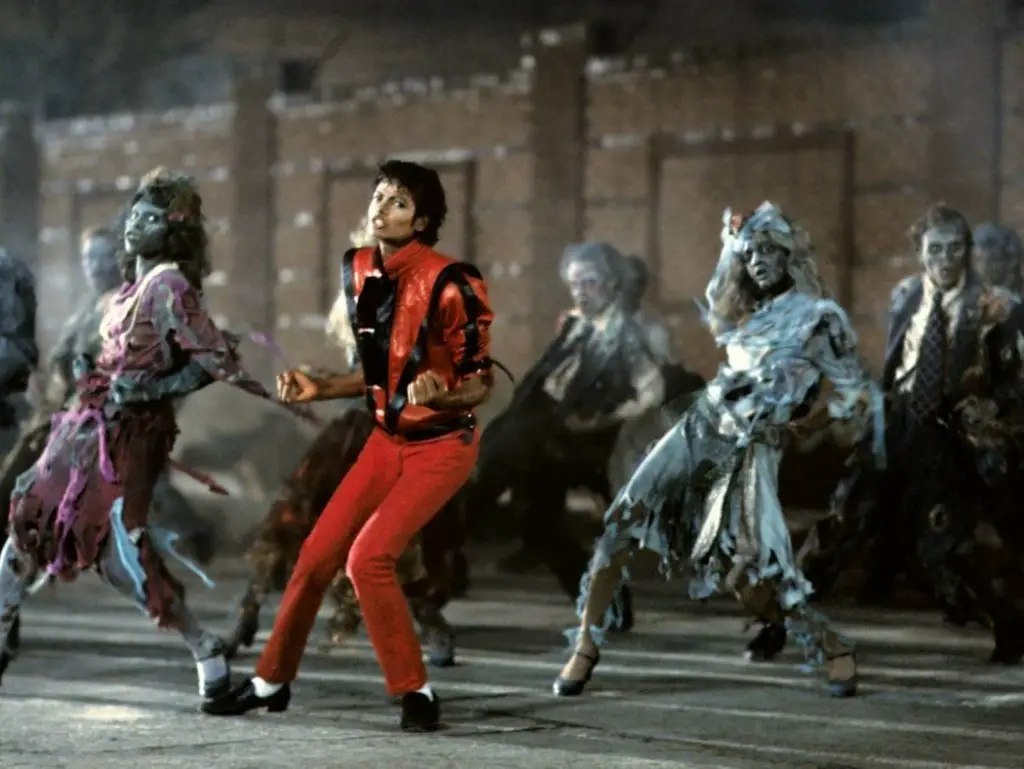80s Shoes That Defined the Decade
Words like, “bohemian,” “versatile,” “preppy,” “jelly” and “inflatable” all have one thing in common…They all describe 80s shoes. In a decade described by many as “big and bright,” big hair and neon-colored clothes were definitely in. But, when it came to 80s shoes, there was actually quite a bit of variety. Thanks in large part to a strong cult movie presence, the mainstream introduction of hip-hop, and the growing popularity of athlete endorsement deals. There were numerous fashion choices to fit just about any style. The following are ten 80s shoes everyone wanted to have!
Minnetonka Moccasins

Minnetonka Moccasins were popular 80s shoes worn mainly with jeans.
No closet in the 80s was complete without a pair of Minnetonka Moccasins. Thanks to the worldwide Urban Cowboy trend at the time, the Mocs with their classic Native American beading were all the hype. As most 80s fashion went, the moccasins were in a class of their own. The shoe’s sole allowed you to comfortably feel the ground but was durable enough to still protect your feet. Aside from their comfort, the shoes served another purpose: versatility. So, although people of the Bohemian Chic variety would frequently sport these babies, they were adaptable enough to be paired with any style.
Jellies

Jelly Shoes
Which of the popular 80s shoes was affordable, unique and came with built-in glitter? Jelly shoes, of course! And they became a staple of 1980s fashion simply thanks to a man named Preston Haag Sr., who discovered the shoe when he traveled to South Africa in 1981 (FN1). By 1982, the shoes debuted at the World’s Fair, and by 1983, they were in Bloomingdales and flying off the shelves. They were as sold for as little as $1, so they were a definite steal (FN2)! They were also water-resistant so rain was never a problem. Add in the many different available neon colors and the sprinkle of glitter, and you have an 80s fashionista’s dream!
Air Jordans
Before #23 ever won his first NBA championship (or even completed his rookie year), he scored big with a multi-million dollar endorsement deal with Nike for the Air Jordan. Michael Jordan had barely even lived up to the shoe’s name. But Nike took a gamble with ads, hype, marketing and promotion touting his ability to “fly” (due in large part to the balloon in the heel that was filled with compressed gas to provide additional comfort and support). They even paid the NBA’s $5,000-per-game fine for Jordan wearing the shoes during games despite the league’s policy on uniforms and colors. It’s safe to say it paid off. With Spike Lee as his wingman in most of the 80s commercials, Michael Jordan had kids everywhere flocking to secure a pair of these 80s shoes in hopes that they, too, could fly like “His Airness.”
Vans

A screenshot of Fast Times at Ridgemont High (1982) shows Spiccoli with his new checkered Vans shoes.
In the 1982 movie, Fast Times at Ridgemont High, people fell in love with 2 things: Sean Penn’s character, Spiccoli, and the checkerboard Vans he wore. After fans saw Spiccoli hit himself in the head with the shoe in the movie’s trailer, demand for the shoe spiked. Vans weren’t just a pop culture phenomenon, though. The second wave of Ska music-called the Two Tone wave—was on the rise. Bands like the Specials and the Toasters were front and center. So, the Vans dual-colored checkerboard pattern also became a symbol of racial unity as they were the shoe of choice for the subculture.
Chuck Taylors/Converse All Stars

One of the most popular 80s shoes was the Converse All Stars. This is an advertisement for the shoe made in 1984.
The Chuck Taylor All-Stars, which were named for the American semi-professional basketball player, were first designed as a basketball shoe in 1922. They largely served in that capacity until the 1980s. Little did Chuck Taylor know that they would become more of a casual, retro-style shoe-particularly for artists and musicians. And, they would become an iconic symbol for 80s pop culture. Bands like the Rolling Stones and the Mighty Mighty Bosstones rocked the shoe on stage and in music videos. The canvas high-top was also popularized by 1980s cult movies, Back to the Future and Ferris Bueller’s Day Off.
Adidas Campus

Beastie Boys in 1986 wearing their Adidas Campus. Image: Getty/Lynn Goldsmith.
More Adidas sneakers than a plumber’s got pliers…That’s a line from the Beastie Boys song “Shadrach.” The hip-hop pioneers became the poster child for the Adidas Campus after band members Ad-Rock and Mike D were photographed wearing the suede low-tops for the Beastie Boys Check Your Head album (3). The group’s allegiance to the shoe no doubt was responsible for it being a trendy item in the 80s. They continued to rock the shoes even after Adidas discontinued production in 1987.
Colorful Pointy High Heels

Brightly colored pointy shoes became very popular in the early 1980s.
High heels became more mainstream in the 80s after designers like Manolo Blahnik brought them to the catwalk and to Hollywood. So, it was only a matter of time before they became the shoe of choice for a night out on the town. As we know, color was all the hype in the 80s, so it would not have been a true shoe of the decade if the women didn’t step out with a pop of pink or yellow on their stilettos.
80s Fashion for Women: Top Styles and Trends
Penny Loafers

Michael Jackson wearing G.H. Bass & Co Weejuns Penny Loafers in the Thriller music video.
Of all the 80s shoes, the penny loafer was probably the most unique. When they were developed in the 1930s, it was more for utility. After all, no other shoe was designed for space for a penny. That two cents would come in handy in the event you had to make an emergency phone call at a phone booth (4). As the 80s rolled around, the penny loafer stood in direct contrast to the flashy and rebellious teen culture that was dominating the decade. The shoe symbolized prep school, wealth and confidence. Even Wall Street wolves who wore them (5). Also, in contrast to the popular neon color trend, penny loafers were much more conservative. The colors were generally black and brown. If anything was an anomaly—yet still a symbol of the 80s—it was the penny loafer.
Reebok Pump

Reebok Pump advertisement from 1989.
It was released at the end of the decade, but the Reebok Pump was the only other athletic shoe that was able to upset the Nike/Air Jordan monopoly. The shoe was the first of its kind featuring a pump system that allowed you to “pump” air into the shoe to provide more ankle support. Reebok recruited Michael Jordan’s on-court nemesis, Dominique Wilkins, as the face of their marketing campaign. And, when it was released in 1989, Reebok stuck a hefty $170 price tag on the shoe. Both were genius moves. Dominique appealed to the masses. And although paying $170 for a sneaker is considered beyond extravagant, it made the shoe that much more appealing because of its status symbol. The result was that by the end of 1990, Nike was forecasting sales of $10 million for its Air Pressure inventory while Reebok earned $500 million with their Pump shoes.
Keds

A screenshot of the movie Dirty Dancing (1987) where Baby Houseman is wearing white Keds.
If you ever attended an athletic event in the 1980s where cheerleaders were performing, chances are they were wearing Keds. Have you ever watched the hit TV show Full House? Chances are you saw D.J. and Stephanie in the Tanner house with Keds on their feet. But, the real reason most of us are familiar with the shoe is because of its prominent appearance in the 1989 film, Dirty Dancing. In the movie, Jennifer Grey’s character, “Baby,” gave us some of her dirtiest dances in the canvas shoe.
Seeing Baby rock the sneaks paired with denim shorts and khakis sparked attention from more women. No longer just a kid’s shoe, Keds were now appealing to working mothers, professional women, and young women who just wanted a simple shoe. On top of that, at only $20 a pop, the price tag was a lot more attractive than what Nike and Reebok was advertising! All of this contributed to Keds’ retail sales growing from $60 million in 1986 to $227 million in 1989.
Each decade has had a shoe or a set of shoes that were the staple of fashion. However, the 80s shoes seemed to be more varied than any other decade. And for those of us who were around, we were able to take one heck of a stroll through the decade.
Additional References
“Jelly Shoes.” 80’s Fashion. March 12, 2015. Retrieved September 11, 2019.
“A Brief History: Adidas Originals Campus.” Size? n.d. Retrieved September 11, 2019.
“A Penny for Your Thoughts.” Brooks Brothers. n.d. Retrieved September 11, 2019.
“7 Style Tribes that Adopted the Penny Loafer.” Esquire. October 5, 2016. Retrieved September 11, 2019.